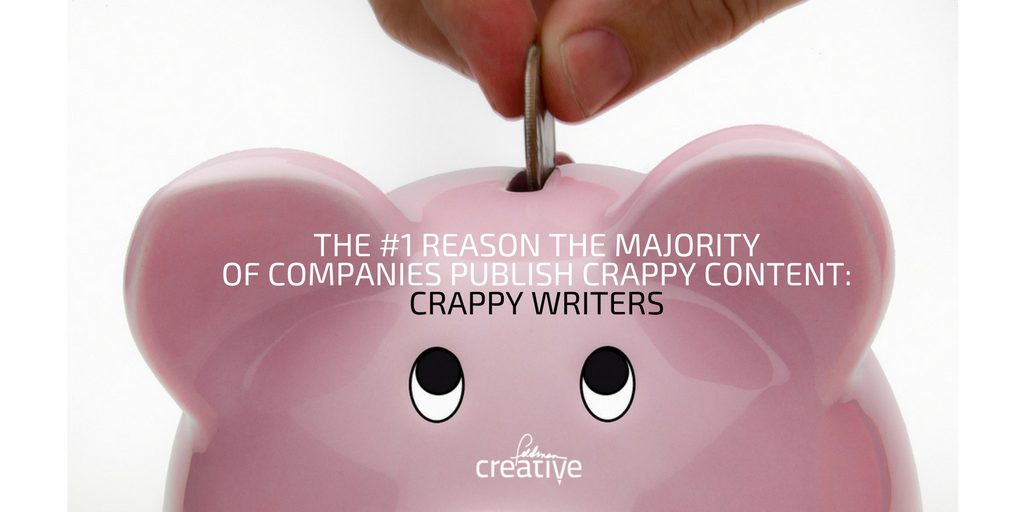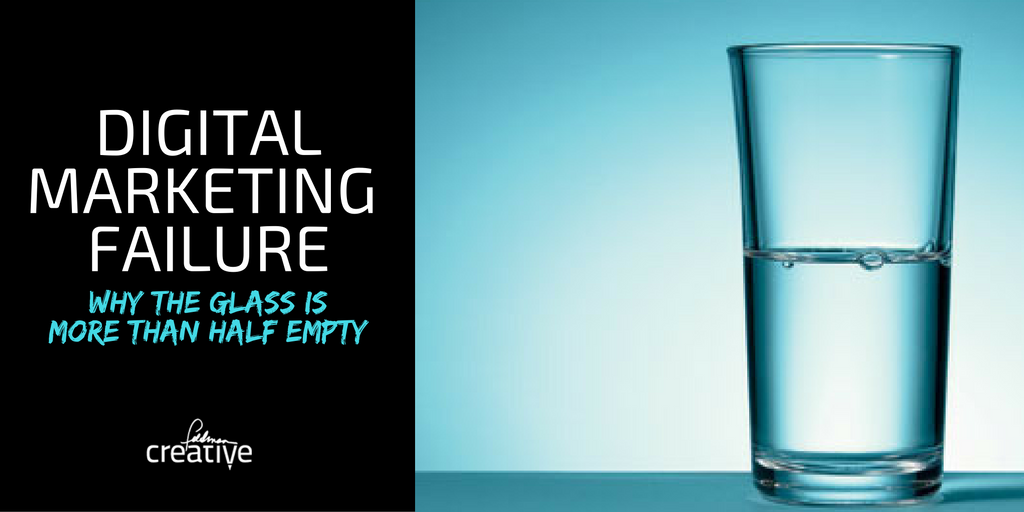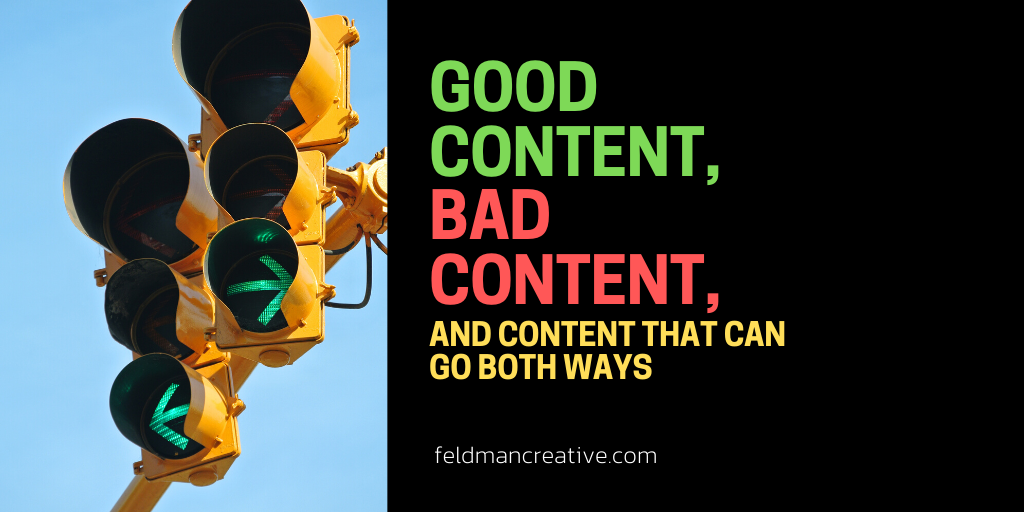Creating content is a huge part of your digital marketing, yet most of it’s a waste of time.
Ouch. Why?
Did you catch the “Content, Shares and Links” study from Buzzsumo and Moz? It examined 1-million blog posts. Two alarming findings include:
- Over 50% of posts earned 2 or less Facebook interactions
- Over 75% achieved zero external links
The report’s author, Steve Rayson, writes, “The majority of content published on the Internet is simply ignored when it comes to shares and links. The data suggests most content is simply not worthy of sharing or linking, and also that people are very poor at amplifying content. It may sound harsh but it seems most people are wasting their time either producing poor content or failing to amplify it.”
Once more for emphasis: most people are wasting their time.
That is harsh—and definitely worth trouble-shooting. It seems safe to say the factors behind unsuccessful digital marketing campaigns can be vast. In this post, I’m going to explore the reasons that stand out to me, especially on the content marketing frontier where so much time is invested.
Poor writing
Maybe it’s the bias of a veteran copywriter coming through here, but I contend the number one reason for digital marketing failure is poor writing.
So let’s take a step back and look at the number one reason the majority of companies publish crappy content: crappy writers.
If we can agree it takes great writing to move readers, why would anyone settle for anything less than a great writer? As simple as it sounds, the concept’s clearly not well understood.

Digital marketers will empty the piggy bank on planning, consulting, design, media, and an array of other things and then go cheap on the writing. They often:
- Hire freelance writers based solely on fees
- Look to the boss, product peeps, or other company insiders to “just get it done”
- Task someone with some writing skills to delve into an project ill-equipped to come through
Makes no sense.
The writing in your posts and on your pages can’t be boring. It shouldn’t include gobbledygook that makes it hard to understand. It shouldn’t be predictable, safe, monotonous, unorganized, sloppy… I’ll stop and say this:
Your copy stops working when reading it feels like work. (< Highlight to Tweet)
Check out 20 Signs Your Web Content Writer Won’t Cut Through the Crap.
Ignoring SEO
You probably don’t dig SEO. Very few do. If it’s a topic you actually do pay some attention to, you know it can be endlessly frustrating because it’s oh-so-ever-changing.
You need to get over it. Understand and apply the basics. Read my book or post, SEO Simplified for Short Attention Spans. If you’re unfamiliar with the terrain, it’ll take you from zero to competent fast.
Understand this: long-term, getting your content to rank high on search will be your most important traffic source.
I’m constantly amazed by how often I find home pages with the title tag “home” and about pages with the title tag “about.” Millions of bloggers are guilty of publishing posts with no regard for optimizing them. No keywords. No tags. No meta descriptions. Ignoring something as basic as using keywords in your title tags practically ensures failure on search.
Not promoting your content
I’d rather not cite stats about the number of pages and posts that are published online everyday. Suffice to say, the digital content overload is immense.
Publishing content, even great content, is not enough. You need to distribute and promote it with fervor and commitment.
If you’re not familiar with the various strategies to increase your content reach, I can help you with this too. Read my post, Content Reach: 25 Tactics for Effective Content Promotion and take advantage of the free PDF eBook I offer there.
Lack of originality
Let’s be real. Most content is unoriginal. You might even be able to check the boxes I’ve covered so far… Well-written, optimized, promoted—check, check, check. But will your work inspire? Will it be memorable?
Maybe it’s good enough to get people to your website, an obvious goal of digital marketing. But is it strong enough to get people to take action? Is your stuff original enough to get people to come back to your website again?
It seems to me most content marketers get their ideas and topics from other content marketers in their field. Then they do the me-too thing with little or no spin. How to (blank)… 21 ways to (blank)… Why (blank) doesn’t (blank).
Look, none of these approaches are bad. And you certainly do want to tackle the things your customers care about even if the topics are insanely popular. Your challenge is to do it boldly—with your point of view, with your voice, with something bigger, better, bolder, brasher.
It’s not easy, I know. You need to embrace the challenge and create content that pins to the far right of the amazing meter.
You can be unoriginal if you want. You can file blogging, social media, email marketing, and whichever plays in the digital marketing playbook you like in the “obligatory” bucket, but don’t be surprised when it fails.
No networking
Again, you can check the boxes including the last one, originality, and still be a tree that falls in the forest.
Digital marketing success, like most things in life, is hard to come by when you operate alone. If you want to succeed, you need to build relationships. I recommend your relationship building efforts include:
- Your clients
- Top publishers
- Influential leaders in your space
- People from companies in related fields, a.k.a. partners
You can probably think of ways to elongate that list and you should. Your network will be key to collaborating to create more interesting marketing content, meeting new people, amplifying your reach, winning business, and opening doors.
You’re familiar with the “know, like, and trust” trifecta of marketing. Recognize the third one, trust, is the hardest to earn and recognize too that far more often than not it comes by way of word of mouth.
Single-minded marketing
This is kind of the age of distrust, isn’t it? I mean, when anyone can easily publish anything they want, you can’t grant blind faith in the same way you might have with the media of yesteryear. To put it bluntly, a lot of people are full of it, often posing as authorities when they’re not.
What should you do in your quest to gain the confidence of your target market? Easy. Bring more trusted people into the fray.
They might be influencers as in leaders in your field. That’ll help. But consider this: nothing will more meaningful to your audience than their peers. Customers. Users, if you must.
User generated content is powerful. Read this post about marketing to millennials to learn more on the subject. And even if you choose not to read that piece, I urge you to simply begin brainstorming ways to bring a more objective voice to your digital marketing party. Of course you believe in your product. Who else does?
Conversion aversion
Simple concept here. If your digital marketing has no goal it can’t be successful. All it can do is, er, be. You don’t want that. You want action.
“The most common failure in most content development initiatives is not finding a way to connect the content to the brand (the one ultimately paying for its development and promotion),” writes Pete Prestipino, editor of Website Magazine.
He continues, “Think long and hard (or short and soft, whatever) about what each post you develop should compel a reader to do and commit to developing creative ways to include it.”
Take inventory of your digital marketing. All of it. Basic webpages… your blog… your portfolio… your email… even what you’re doing offsite. Do you have a call to action in place everywhere?
Make this a serious exercise and get yourself into fix mode. Find pages, posts, or anything you put out into the digital universe that doesn’t tell the visitor what to do and where to go next and fix them.
Check out The Fast & Simple Way to Increase Your Conversion Rate. (It features an infographic, 25 Power Words to Create High Converting Calls-to-Action.)
Nurturing’s not happening
Some marketers don’t do email marketing. Want me to tell you why? Hmm. My best guess is they don’t care about sales. As silly as that may sound, it’s what jumps to mind when I talk to my prospects and clients that don’t have email in their arsenal.
Email marketing is important. It’s permission-based. It’s effective. It’s cheap and relatively easy. Do it. Ask your visitors to join your email list giving them a reason to do so with a lead magnet.
> Get schooled in the basics of email marketing here.
(Noticing a pattern? Yep, I try to publish content to help you become a more effective digital marketer.)
Bad aesthetics
Every once in awhile I read someone vamping on the idea that websites need not look good to work. Sorry, I beg to differ. You can probably prove me wrong by pointing me to some hot mess of a site that sells okay, but I’m violently adverse to crappy looking sites and you probably are too.
Your website reflects your brand. To first-timers, it IS your brand. Make your site look tasty. Make your visitors want to have a look around.
The company hasn’t created a marketing culture
Here’s the deal on this—and it relates to the “single minded marketing” problem above…
You’ve no doubt read about, in the digital age, how deep into the process most buyers go before they reach out to the sales department. Your take on this should be marketing IS sales. Sales IS marketing.
And that’s just two crossovers. The reality is your digital marketing is far more likely to fail if marketing is the only department involved in doing it. See, the companies that truly kick some digital marketing booty purposefully create a marketing culture all across the company. Top-down, side-to-side.
Everyone in the company serves a purpose (I hope) and has the potential to jump aboard the marketing train. Encourage this sort of behavior and build this kind of culture and you’ll create better content, inspire a more authentic dialogue with prospects, and reach a larger and wider audience.
Welcome to the 21st century. Everyone has a voice and can help build your brand.
Strategic indifference
There is a whole lot of tail-wagging-the-dog syndrome in companies that are realizing disappointing results with the digital marketing. By this I mean the company chases a tactic without a strategy.
For instance, Facebook… or Instagram… or blogging… or anything. Too many marketers discover their company is lagging with a specific media play or channel so they dive in as fast as they can. Then they see no results.
Whatever you’re doing, wherever you plan to spend your time or money, you need to forge a strategy, document it, create meaningful metrics to become your KPIs, consistently measure them, share them, and respond according to the lessons you learn.
Call it planning. Planning tends to be helpful.
Limited scope
Perhaps the flipside of the passage above, at least the media and channels part, is that those disappointed in their digital marketing are not extending themselves as much as they should.
There is quite a myriad of media channels. This doesn’t mean you should aimless latch on to them all. It means you should anticipate your potential buyers consume different media in different ways. So you need to carefully examine your buyers, create personas, and pursue new strategies to engage them online.
You won’t find a perfect approach for this. You need to experiment, test and perpetually refine your efforts.
Don’t make it harder than it has to be. If you’re a strategic content marketer, your strategies should include ways to gather content once and repurpose it often—and in different forms.
Lack of commitment
Here’s an obvious and painfully prevalent reason for digital marketing failure: dipping the toes syndrome. You’re not going to succeed if you blog a little, take to social media now and then, optimize your pages just a bit, or email now and then.
It doesn’t work that way. It takes commitment. Understand, you are not an early adopter now. It’s amazingly unlikely your digital marketing efforts alone make you unique.
If the boss is willing to sign-off on the digital marketing experiment for just a few months, he or she hasn’t actually signed-on. This stuff takes time. You need to be patient and persistent if you want to achieve success in digital marketing.
Want to know how to connect?
I now return you to the Buzzsumo and Moz study. A passage from it reads:
“There are, however, specific content types that do have a strong positive correlation of shares and links. This includes research backed content and opinion forming journalism. We found these content formats achieve both higher shares and significantly more links.”
There you go again. Bolder is better.
You might say this post is an example. Its topic is not original. And while in large part, it’s a how-to piece, it also contains research and a strong opinion.
Why does opinion content get higher shares and referring domain links? Steve opines, “Opinion content is typically focused on topical issues that are already engaging an audience. The content is also more likely to take a particular slant or provocative viewpoint. These factors may partly explain why the content performs so much better in terms of shares and referring domain links.”
Bigger is better too, or it can be. The study also points out long form content of over 1,000 words consistently receives more shares and links than shorter form content.
The glass is…?
I might have sounded a bit pessimistic here. I’ve been accused of this before. However, I maintain that problem-solving must begin with a hard (and objective) look at identifying the problem. The problem’s obvious—and extreme. Most digital marketers, as they take to publishing content, are coming up empty. The work earns very few shares, and the majority of the time, no links.
Of course, you could measure your content in ways besides shares and links, but if you’re consistently getting goose-egged on these basic metrics, your investment in content marketing is under-performing in the important channels of social media and search.
I didn’t write 2,500 words trying to convince you to bail on content marketing. I’m hoping I’ve poured you some ideas that will make your glass half-full, your approach more optimistic, and your results more rewarding.
Get in touch with me to get help planning and creating magnetic content.










Comments
Neil Murphy
Wow Barry. Dramatic. Well written. It was a pretty daunting headline but your crystal clear – as always – in your intent
Barry Feldman
I call em as I see ’em. I don’t know for sure why so much content is a bust, but I do know it is.
Neil Murphy
“Bolder is better” – say no more…
Hal Werner
Your twitter post said that the biggest reason for crappy content was crappy writers. Fortunately, I read through your post before adding my two cents – I discovered that you actually covered the litany of other root causes for bad content I was going to mention—things like lack of strategy, failure to promote content, and goal-orientation. Well put together.